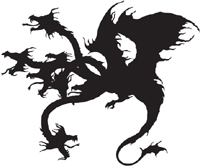
I love adventure stories, but I’ve always been disappointed that so many traditional adventure tales are about girls who need boys to save them. This led me to make radical changes to a dragon story while I was telling it to a room full of nine-year olds, so that instead of waiting at home for a boy to kill the dragon, then being married off to him as a prize, the girl went out and killed the dragon herself (using exactly the same clever method the boy used) then refused to marry anyone. The story went down very well with the nine-year-olds, but I felt I had been unfair to the original legend. I felt I had changed the story too much, that I had ripped the heart out of it.
So since then, instead of being annoyed by the stories I know, or changing them beyond recognition, I’ve been searching for authentic traditional stories with strong girls. There are lots of them out there, if you look hard enough: folktales, fairy stories, legends and myths where the girl or goddess sorts out her own problems.
Now I am delighted to share my favorite heroine stories with you.
But I have to admit that even though I don’t like to alter the heart of a story, I do often tinker with the edges, before I tell them out loud to groups of children. I might change the dialogue so it works in my voice, or fill a few plot holes so the story makes more sense to me, or add a few details so the pictures in my head are more vivid, or stretch out the chase scenes and battles to make the telling more exciting. So the stories I tell are my own versions, true to the spirit of the story which inspired me, but not identical in the words or the details. That’s how stories grow and evolve and stay alive, so if you tell any of these stories, please make them your own too!
In case you want to read more about these characters and cultures, here’s where I originally found the stories. Good luck hunting for your own heroines and defeating your own monsters!

Chi and the Seven-headed Dragon
I tell lots of dragon stories and this is one of my favorites, partly because a dragon with seven heads and 693 teeth (did you work that out?) is pretty scary and partly because Chi is a resourceful girl who kills her own dragon without help. This is my version of Sally Pomme Clayton’s “Dragon Girl” story in Amazons! (Frances Lincoln, 2008) which is a retelling of the Chinese Ballad of Li Chi.
Inanna and the Box of Monsters
I love the old Sumerian myths, and the goddess Inanna has better action stories than most of the gods. The original story of Inanna and Enki, written in cuneiform writing thousands of years ago, doesn’t give much detail about the monsters, so I had fun inventing the fights. However, the original does give lots of detail about the gifts, so everything Enki gives Inanna is authentically Sumerian. Even the hairdressing. I first read about Inanna in Sumerian Mythology by Samuel Noah Kramer (University of Pennsylvania Press, 1961) then found more recent translations online.
The Wolf in the Bed
I’ve recently written a traditional retelling of Little Red Riding Hood, which is lovely for little ones, but a bit frustrating because she has to be rescued from the wolf’s belly by a man with a knife. When I was researching the origins of the tale, I found a much older version, which isn’t as child-friendly, but which I really liked because the heroine saves herself. So this is my adaptation of Catherine Orenstein’s translation of “The Grandmother’s Tale” in Little Red Riding Hood Uncloaked (Basic Books, 2002).
Telesilla and the Gates of Argos
There are various versions of this story about women defending their city. I chose to adapt the one which seemed most likely and realistic to me, which is from an ancient travel guide explaining why Argos had a statue of a woman with books and a helmet: Pausanias, Guide To Greece Volume I: Central Greece (Penguin Classics, 1971).
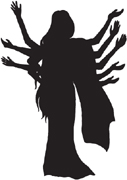
Durga and the Demon
I first discovered the Hindu myth of Durga and her ten arms in Indian Mythology by Veronica Ions (Paul Hamlyn, 1967), then researched many other versions to create the list of ten weapons and the variety of Mahisha’s shapes which seemed most vivid and exciting to me. I’m still not sure what the lotus flower or conch shell are for, though!
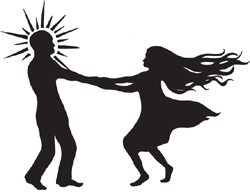
Kopecho and the Two Suns
This is my expanded retelling of a tale which appears in Yupa Folktales by Johannes Wilbert (Latin American Center, 1974). Many old stories tell how the earth was cold and dark, and how some clever trickster found the sun to warm and light us, but I like the idea of too many suns being just as bad as no sun. I’m not sure how Kopecho managed to turn into a frog at the end though. I could have made up a bit of plausible magic to explain it, but old stories don’t always have to make complete sense!

Mbango and the Whirlpool
This is a theme which appears in stories all over the world: the downtrodden heroine is helpful and polite, and is repaid with riches, but the rude girl gets a very different reward. Most of these stories don’t have pig dung in them, though, which was why I chose this one! From An Anthology of Myths, Legends and Folktales from Cameroon by Emmanuel Matateyou (Edwin Mellen Press 1997).
Hervor and the Cursed Sword
I first came across Hervor in the Encyclopedia of Goddesses and Heroines by Patricia Monaghan (Greenwood Press 2010), then tracked down more of her story online (including the Saga of Hervor and King Heidrek the Wise on http://www.northvegr.org) to create my own adaptation. But I do wonder if she made up that story about the ghosts, just to make herself seem braver. What do you think?
Visiting Baba Yaga
I found this classic witch story in Old Peter’s Russian Tales by Arthur Ransome (Jane Nissen Books, 2003) and I’ve told it so often that I’ve probably changed it a bit. In folklore, throwing a small object behind you to create a magical obstacle is a common way to escape from a villain, and this is my favourite version of that kind of chase.
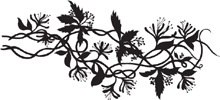
Aliquipiso and the Cliffs
There are many strong heroines in Native American tradition, but once I’d read this story, in John Long’s Pale Moon, Tales of American Indians (ICS Books, 1995), I couldn’t forget Aliquipiso’s courage and especially her very sad end.
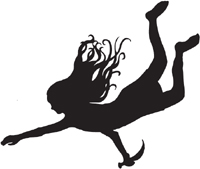
Tokoyo and the Skin Rope
I originally found this story (in Richard Gordon Smith’s Ancient Tales and Folklore of Japan, A&C Black, 1918) when I was researching how long people can dive underwater for one of my adventure novels. I have to admit I’ve made the monster’s death a bit gorier than the original, but Tokoyo’s skills and bravery are the same!
The Giant’s Heart
I based this story on the final part of a long tale in JF Campbell’s Popular Tales of the West Highlands Volume 1 (first published in 1860 by Edmonston and Douglas) and combined it with some elements of a very similar story in Italo Calvino’s Italian Folktales (Penguin Books, 1982). I included this story even though the girl doesn’t escape all on her own, because I like the way the boy and girl work as a team: his sword and kindness, her cleverness and courage.